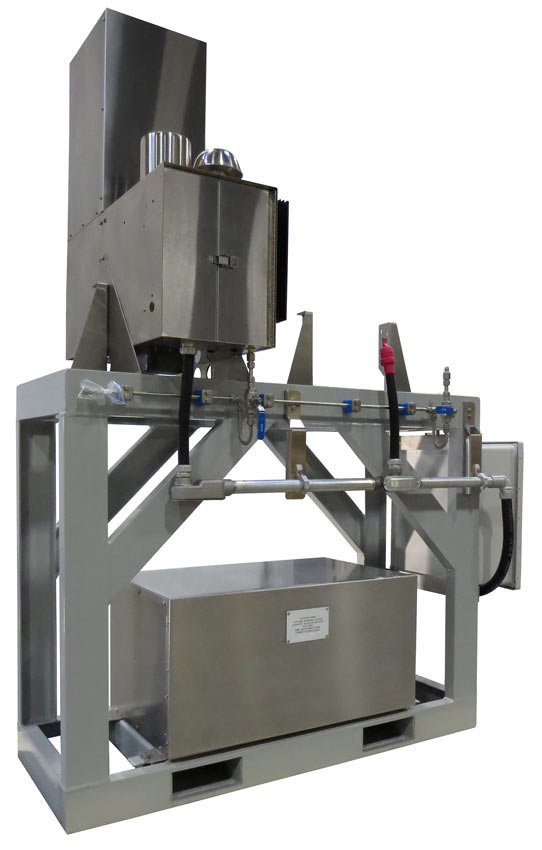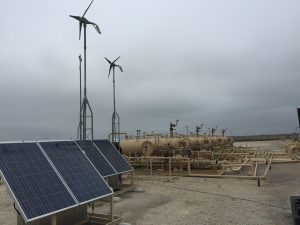Alternative power solution to solar challenges at remote well sites
Renewable energy such as solar is often a choice for power generation at well sites in remote locations, but its dependence on the weather makes reliability a challenge. Remote sites are now turning to thermoelectric generators because they can provide continuous power supply, while operating unattended and independently from the weather.
Multi-pad well sites are often located in remote areas within harsh, and occasionally hostile, environments. Many companies utilise wind and solar power systems at these sites to power SCADA, radio communications, ESD shutdown valves, and process meters.
Power systems that use renewable energy benefit from lower emissions but run into difficulties with reliability, as they are dependent on specific weather conditions.
This was the case for a major exploration and production company operating in the Eagle Ford shale play in the south of Texas, USA. The client had numerous wind and solar power systems deployed at their multi-pad well sites, and encountered reliability problems. They turned to Gentherm Global Power Technologies (GPT), the global leader in the manufacturing and distribution of thermoelectric generators (TEGs), for a solution.
Garry Forbes, VP Sales and Service at GPT said wind and solar resources suffered power system failures due to weather conditions, resulting in higher maintenance costs and frequent production outages.
A new source of power
In exploring solutions for their client, GPT discovered the well sites had a convenient supply of instrument gas that could be utilised for on-site thermoelectric power generation.
The client replaced the wind and solar power system with a TEG supplied by GPT, increasing power availability while decreasing operating costs due to the TEG’s reliability.
Forbes stated that TEGs burn gas or propane to create heat which is directly converted into DC electricity. As heat moves from a gas burner through a thermoelectric module, it causes an electrical current to flow. The TEG’s solid-state design ensures a long service life with minimal maintenance.
Thermoelectric generators have a small footprint, operate independently from weather conditions and don’t require solar panel cleaning.
After further analysis of the site, an opportunity was also found to supply power to additional equipment, including solar powered chemical injection skids.
“Combining multiple power packages into a single distributed power system reduces costs and allows control and monitoring of all site equipment,” explained Forbes.
Maintenance considerations in a remote environment
TEGs have become a superior alternative to solar and wind generation for remote gas sites and are ideal for long term unattended operation. TEG preventative maintenance is required only once a year and can easily be performed by operations personnel with only basic training.

TEG packages are shipped to well sites completely integrated on a reinforced stand, significantly reducing onsite labour costs. Packages can also be equipped with a small battery bank to provide 24 hours of autonomy, in the event of fuel interruption.
“The TEG supplies the system load and float charges the battery bank. Float charging extends the life of the battery bank and eliminates the need for costly deep cycle batteries and solar charge controllers. The TEG system battery bank is significantly smaller than a solar (PV) system which requires 7+ days of backup battery,” said Forbes.
Besides wellhead automation, TEGs can also be used on gas pipelines, cathodic protection, valve automation, offshore platforms, SCADA, telecommunications, security and surveillance.
Australian gas sites have similar challenges in finding reliable power generation, as most sites are located within remote regions.
Wade Elofson, founder of Powered, an Australian energy and resource-focused business development company, said innovative solutions like TEGs will help the Australian market increase efficiencies and, therefore, reduce power generation and production costs.
“A lack of access to reliable power can be a huge problem for gas sites in Australia, affecting productivity while driving up costs,” Mr Elofson said.
“In today’s challenging cost-competitive environment, using TEGs can combat the problems renewable generation has and offer significant advantages in terms of costs, minimising maintenance and ensuring a continuous power supply.”


